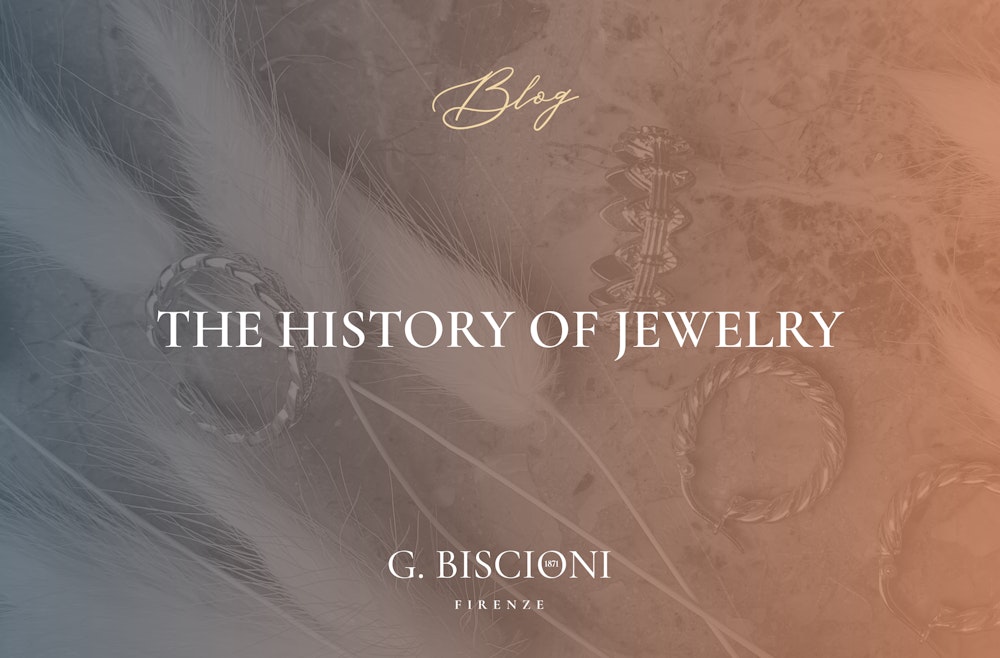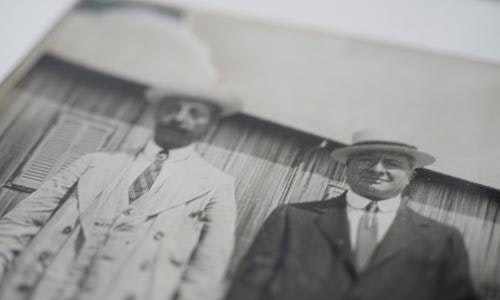
The History of Jewelry
The Birth of the First Jewelry
Jewelry was born as an object of strong symbolic value in prehistoric times when early civilizations adorned themselves with teeth, mammoth tusks, bones, or shells.
It was the Copper Age that marked a turning point in the use of noble materials like gold and silver, employing increasingly sophisticated techniques.
The evolution of the Jewelry's Function
About 5,000 years ago, with the beginning of the Golden Age in Egypt, jewelry started to be primarily used in funerary artifacts. The funerary ensemble was often embellished with colored stones and enamels, taking on increasingly elaborate and complex forms.
The birth of aestetic function and the technique of granulation
The use of jewelry for aesthetic purposes began in the era of the Sumerians, who invented the technique of granulation, still used today in Florentine jewelry.
During the Hellenistic Age, jewelry became more refined and sought-after, and with the Roman civilization, goldsmithing techniques such as glyptic art, the use of layered stones, developed.
From here began the tradition of the ring as a symbol of engagement.
Florentine Goldsmithing Tradition
In the Middle Ages, jewelry was reserved for royal families or used as sacred objects; however, from the 1500s, a new era for jewelry began.
Cosimo De' Medici allocated the workshops on the Ponte Vecchio in Florence to goldsmiths, turning goldsmithing into a true professional activity, leading to real specializations in the field.
It was a time of great specialization of trades and the birth of guilds, which also included the famous goldsmiths of Ponte Vecchio in Florence, where during the Renaissance, celebrated painters and sculptors like Donatello, Botticelli, and Brunelleschi also worked.
In France, around 1760, there were about 314 jewelers in Paris, and during the Victorian era, new artisanal techniques were developed.
The Discovery of Diamonds and the Evolution of the Jeweler
Only from 1870, thanks to the discovery of mines in South Africa, diamonds, which until then had been reserved for a few social classes, began to spread more widely and become prominent. Only from the 1930s did the jeweler start to employ professional figures like engravers, enamellers, and stone setters. This allowed finding the right balance between the jewelry setting and the materials used.
Who is the Jeweler Today?
Today, the jeweler studies societal changes and the occasions for wearing jewelry to propose innovations in the sector, sometimes drawing inspiration from the past. The stories of the past are rich in characters and values that, with a touch of modernity, can be translated into unforgettable creations.
Did you know the history of jewelry? If you want to relive the Florentine goldsmithing tradition, you can visit our website to see our collection or come visit us at Ponte Vecchio, 38r.
Since 1871
The history of Biscioni Gioielli started in 1871, and it's a tale about tradition and craftsmanship, intertwined to form a design whose contours are the same as the Florence skyline.
The Workshop
In a market-oriented foreign production, Biscioni Gioielli still crafts its jewels in its artisan workshop on Ponte Vecchio, faithful to its Italian excellence roots.
Atelier
Jewels are the opportunity to hold a dream in your hands, wear it, and recognize it in the admiring gaze of those who see it—a hidden yet full of meanings treasure.

